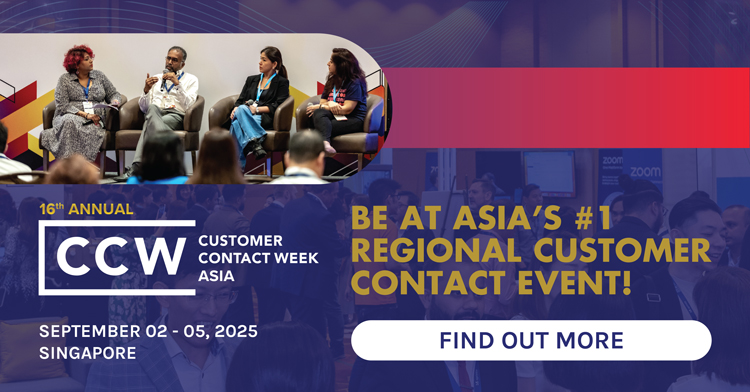Most executives will readily say ‘our people’ are vital to the success of the business. Yet so many Australian organisations have inadequate employee engagement strategies in place. The coronavirus pandemic will be a defining moment in most people’s careers. How brands respond in the coming months will have a lasting impact on employee engagement, productivity and commitment.
Most senior executives in Australia do not believe that investment in Employee Experience (EX) will yield a business return. Recent research from Mercer highlights that only 27% of executives see value in EX investment and just one-in-three business leaders are accountable for it.
Mercer’s research, However, shows organisations that lead with empathy are more energising to work for. “Empathetic organisations are tuned into the experiences of their workforce and continuously improve them — simplifying and digitising repetitive tasks while increasing the meaningful moments that employees crave”.
Companies that can engage their employees gain numerous benefits in terms of improved productivity, reduced staff turnover costs and less absenteeism. Lucia Kelleher a behavioural neuroscientist, comments, “Companies that invest in their culture and the employee experience benefit through enhanced customer experience which in turn offers a significant point of differentiation for the brand.”
Most CX leaders and professionals know there is a clear link between employee and customer experience. Creating exceptional experiences for customers requires having engaged employees who are enthusiastic about their workplace and their role within the organisation. For some it’s more important to invest in EX rather than CX.

In a recent article in the Australian Financial Review, Jason Bradshaw – Volkswagen’s chief customer marketing officer, comments, “If you can’t invest in both the customer and employee experience, then invest in the employee experience because that will lead to better results for customers in the long run,”
CX leaders need to work with HR to move EX up executives’ priority list.
Competing in a talent lead economy
A better employee experience can provide brands with an edge in a talent led economy. The economy is no longer about products, services or features it’s about experiences. Just as people want better experiences as customers they also want better and enriching experiences as employees. Today’s millennial employees are looking for more than a salary and generous benefits package. They crave purpose. They want a job where they feel they are making a positive impact.

In a recent survey by PwC, 70% of CEOs cited talent and expertise as the largest choke point for business growth. The ability to attract, engage and retain the best talent in a way that’s affordable and easy to manage offers a key competitive advantage.
EX Challenges and Roadblocks
Even for organisation’s that recognise the benefits of improving EX, their ability to do so can be hamstrung by a range of issues and problems. As highlighted by recent research from Deloitte, companies face a number of challenges when trying to improve the employee experience[i], including:
- Employee experience is not a priority for many organisations. Very little is done beyond the annual or bi-annual performance review and employee feedback survey
- Most companies have not assigned responsibility to a senior executive or team to design and deliver the employee experience.
- Siloed departments often find it difficult to obtain the resources needed to address an integrated set of priorities, which range from management practices to the workplace to benefits and, often, the work culture itself.
- Companies need to update their tools to engage employees on an ongoing basis (with pulse surveys at least) to help HR teams and line leaders understand more fully what the talent they employ expects and values. An employee net promoter score is another important tool in this effort.
- Many companies remain focused on “point-in-time engagement” and have not yet pulled together the disciplines of performance management, goal setting, diversity, inclusion, wellness, workplace design, and leadership into an integrated framework.
What impacts the employee experience in one part of the organisation can be very different for another area of the same organisation. Josh Bersin highlights, “We must also remember that “employee experience” problems in one part of the company are different from those in another”.
“Take the example of a global beverage manufacturer: The sales teams had problems with online ordering, road fatigue, and poor internet coverage. The Mexico-based manufacturing employees had problems getting basic first aid and medications at work. And the German software and engineering organisations needed better solutions to enable older workers to perform. Each needed different types of workplace solutions”.
Listening to people
Just as good customer experience starts with truly listening to customers, good employee experience commences by truly listening to employees. Loredana Mazzoleni Neglén, Swiss Re Corporate Solutions, Global Head of Customer Experience, says, “One of the basic principles of energising employees is to listen to them and understand “why” they come to work every day. Key is then to create a strong alignment of their purposes and needs with the ones of the company to achieve truly rewarding employee experiences”.
By listening to people you can identifying the areas and experiences that cause them frustration. Then you can decide how best to remove those pain points and improve the overall employee experience.
Employees expect end-to-end workplace experiences, inspired by their experiences as consumers, whether it’s as simple as picking up a pay check to all the way thru to accessing education and learning, performance management or managing benefits.
[i] https://www2.deloitte.com/us/en/insights/focus/human-capital-trends/2017/improving-the-employee-experience-culture-engagement.html

